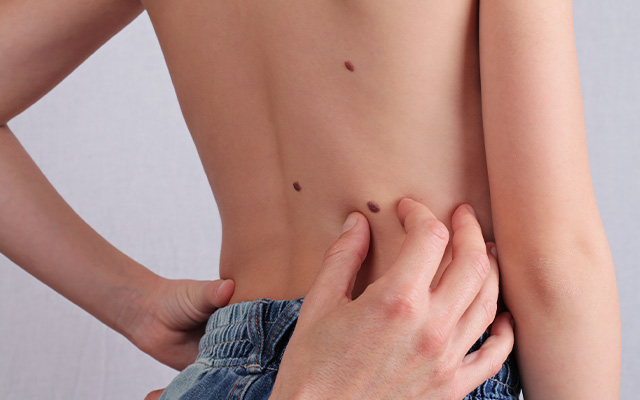

Prof. Aimilios Lallas
Friday, 17 May
09:00 CEST
Spitzoid lesions represent a challenging and controversial group of tumors, in terms of clinical recognition, biologic behavior and management strategies. Although Spitz nevi are considered benign tumors, their clinical and dermoscopic morphologic overlap with spitzoid melanoma renders the management of spitzoid-looking lesions particularly challenging. The controversy deepens because of the existence of tumors that cannot be safely histopathologically diagnosed as nevi or melanomas (atypical Spitz tumors-AST).
Pigmented Spitz nevi are dermoscopically typified either by a starburst pattern or by a globular pattern associated with reticular depigmentation.
Regularly distributed dotted vessels surrounded by white lines or areas (negative network/reticular depigmentation) represent the dermoscopic hallmark of non-pigmented Spitz nevus. In raised and nodular Spitz nevi the vessels might project as large red globules, coiled vessels or even hairpin or corkscrew vessels.
The majority of AST are dermoscopically typified by a multicomponent pattern and are, therefore, dermoscopically similar to melanoma. However, a proportion of AST might display regularly distributed dotted vessels with or without reticular depigmentation, mimicking a non-pigmented Spitz nevus.
Spitzoid melanoma is usually characterized by an asymmetric distribution of spitzoid features (streaks, globules, vascular structures), often combined among them to form the so-called multicomponent pattern. However, less frequently, melanoma might perfectly mimic a pigmented or non-pigmented Spitz naevus. The probability of a dermoscopically symmetric spitzoid-looking lesion to be a melanoma depends on the patient’s age: It is extremely low before puberty and gradually increases afterwards, being equal to 50% after the age of 50 years.
Management of spitzoid-looking lesions
Lesions displaying spitzoid features (peripheral streaks/pseudopods, dotted vessels, reticular depigmentation) asymmetrically distributed should be excised to rule out melanoma.
Dermoscopically symmetric spitzoid-looking lesions developing after the age of 12 years should also be managed with caution since, as mentioned above, such a lesion has a considerable probability to be a melanoma. The recommended management is excision.
Below the age of 12, the recommended management of dermoscopically symmetric nodular spitzoid-looking lesions is excision, mainly because the possibility of AST cannot
be excluded on the basis of dermoscopic morphology. Follow up until stabilization represents an acceptable alternative option.
Below the age of 12, the recommended management of dermoscopically symmetric flat/raised spitzoid-looking lesions is follow up until stabilization. However, clinicians should take into consideration that Spitz nevi are highly dynamic lesions and following up their morphologic evolution sometimes will increase anxiety instead of reducing it and lead to unnecessary excisions.


